How would Jane Austen celebrate Christmas?
With Christmas just around the corner, LUCAS PhD candidate Fernanda Korovsky Moura looks back to holiday festivities in the Georgian era, and explores how Jane Austen (1775-1817) experienced and celebrated Christmas.
The holiday season is fast approaching and you are probably busy planning the festivities, buying gifts, and hanging stockings on the fireplace. As I began preparing for Christmas myself I, an avid reader of Jane Austen, could not help but wonder: how would Austen celebrate Christmas in her time? The author of Pride and Prejudice (1813) lived during the Georgian Era, a period in English history that lasted from 1714 until 1830. Carlos DeVito writes about how Christmas was celebrated in Austen's time, and about six specific Christmases in the author’s life: 1786, 1794, 1795, 1802, 1809 and 1815. Austen herself was fond of Christmas celebrations, and mentions the Christmas holidays in all of her novels. For instance, she describes a scene of a “domestic hurricane” at Uppercross Hall in Persuasion (1818). The author brings to life the high spirits of the season, the activities and food abundance:
“On one side was a table occupied by some chattering girls, cutting up silk and gold paper; and on the other were tressels and trays, bending under the weight of brawn and cold pies, where riotous boys were holding high revel; the whole completed by a roaring Christmas fire, which seemed determined to be heard, in spite of all the noise of the others. […] It was a fine family-piece.” (Austen 1818 109)
Jane Struthers explains that the Austen family would often play a favourite Regency party game called “bullet pudding” during the Christmas holidays. Here is how Fanny Austen, Jane’s niece, describes the (quite dangerous) game in a letter dated 17 January 1804:
“You must have a large pewter dish filled with flour which you must pile up into a sort of pudding with a peek at top. You must then lay a bullet at top and everybody cuts a slice of it, and the person that is cutting it when it falls must poke about with their noses and chins till they find it and then take it out with their mouths of which makes them strange figures all covered with flour but the worst is that you must not laugh for fear of the flour getting up your nose and mouth and choking you: You must not use your hands in taking the Bullet out.” (Struthers 2012 253)
In addition, many events in Austen’s personal life took place around the holiday season, starting with her birth: Jane was born on December 16, 1775, nine days before Christmas. As DeVito explains, in Jane's time, people celebrated not only December 25th or Christmas Eve but practically the whole month of December - mainly, the 12 days of Christmas, which comprised the period between December 25th and Epiphany, January 6th. During all this time, it was common for people to visit each other, especially in the countryside. So there was always food in abundance and entertainment options to spare throughout the month.
Jane was 11 years old during the Christmas season of 1776. Her father, George Austen, was a minister, and was most likely responsible for the Christmas Day sermon. Jane, her mother, her sister Cassandra and her brothers Henry, James, Francis, Edward, Charles and George would brave through the snow to hear their father's words during the celebration in the parish. DeVito writes that in Jane's time, there was not yet a custom of having a Christmas tree in the house. Instead, people decorated their houses with foliage, green branches and fruits such as apples and oranges, which gave the place a characteristic smell. It was also customary to fetch the largest tree trunk in the vicinity and drag it with pomp and ceremony into the house. The log, called a Yule Log, would burn and provide fire for all 12 days of Christmas. This ritual is derived from a medieval Norse tradition, which symbolizes light and enlightenment.
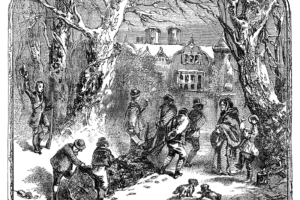
At Christmas 1794, England was at war with the Republic of France. Jane was 19 years old then and had already started her journey in the literary universe. She had been writing since she was a child - probably since she was 11 or 12 years old. According to DeVito, her father encouraged Jane's relationship with letters, and even let Jane read whatever she wanted from his library (Reverend Austen ran a school for boys in his house, so he had several study books at his disposal). For her 19th birthday, Jane's father gave her a portable mahogany writing desk, which is now on display at the British Library. In that same year, at that very desk, Jane began writing her first novel, Lady Susan (1794). In fact, the character Catherine Vernon, Lady Susan’s sister-in-law, mentions Christmas in her first letter in the epistolary novel, informing her mother that she and her husband would not be able to spend Christmas with them as planned.
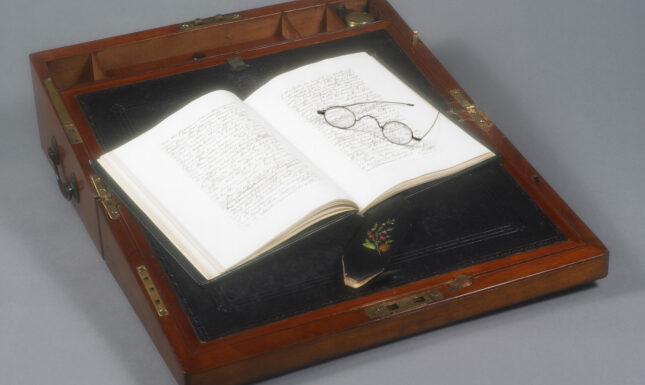
Jane was fond of attending balls, one of the main forms of entertainment in Regency England. As Lord Brabourne points out, in his edited Letters of Jane Austen, published in 1884, “it is very clear, however, that Jane Austen was by no means averse to amusement, appreciated a ball as much as anybody, and got all the enjoyment she could out of life, as a sensible young woman might have been expected to do” (Brabourne 1884, 46).
DeVito writes that during the Christmas of 1795, Jane attended many balls, and at one of these she met Thomas Langlois Lefroy. The young man had studied law at Trinity College in Ireland and worked at Lincoln's Inn in London. The two got along immediately and were reunited at other balls during the season. In a letter to her sister Cassandra dated Saturday, January 9, 1795, Jane writes about her “Irish friend” and the impression he made on her:
“You scold me so much in the nice long letter which I have this moment received from you, that I am almost afraid to tell you how my Irish friend and I behaved. Imagine to yourself everything most profligate and shocking in the way of dancing and sitting down together. I can expose myself, however, only once more, because he leaves the country soon after next Friday, on which day we are to have a dance at Ashe after all. He is a very gentlemanlike, good-looking, pleasant young man, I assure you.” (1884, Vol. I, 126-7)
According to DeVito, despite Jane’s enthusiasm, the boy's family was afraid that the promising young man would commit to a middle-class girl without much future, and convinces him to leave the place. Jane writes back to her sister Cassandra a week later:
“At length the day is come on which I am to flirt my last with Tom Lefroy, and when you receive this it will be over. My tears flow as I write at the melancholy idea.” (1884, Vol. I, 132)
During the 1802 Christmas season, Jane and her sister Cassandra spent time in Bath at the home of their friends, the Bigg sisters, as DeVito writes in his book. Jane was almost 27 years old and Cassandra, two years older, was already 29. The younger brother of the Bigg girls, Harris Bigg-Wither, was present for the holiday festivities. He had changed and grown a lot since Jane and Cassandra had last seen him. Jane and Harris got along very well, and on December 2 Harris surprised Jane with a marriage proposal. On the spur of the moment, Jane accepted, but after a night of thinking, she decided to backtrack and decline Harris's request the next morning. The boy felt humiliated. Jane and Cassandra had to leave the Bigg-Wither home before Christmas Eve and the friendship with the Harris sisters was also affected by Jane's reaction.
Since the death of Jane's father in 1805, Jane, Cassandra and their mother had to move to smaller places and drastically change their lifestyle. At that time, women could not inherit property by law, so the Austen women found themselves without a source of income and without a place to live. They depended on the help of their brothers, especially Henry.
In July 1809 the three women moved to Chawton, where the Jane Austen Museum is now located. Due to their less refined lifestyle, the women had fewer guests at home. So Christmas 1809 was pretty uneventful. Jane enjoyed the time with her family and devoted herself to writing. At home in Chawton she revised the manuscripts of Sense and Sensibility, published in 1811, and Pride and Prejudice, published in 1813.
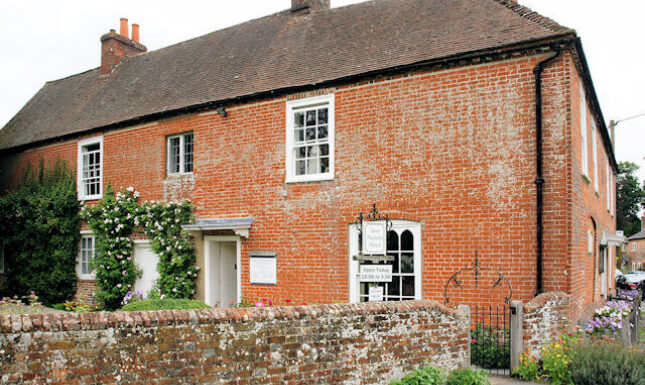
During the Christmas period of 1815, Jane Austen's last published novel during her lifetime was released: Emma. Jane had already established herself as a writer and received a good amount of money for her books.
According to DeVito, in December of that year, Jane was invited by the librarian of Prince Regent George, later King George IV, to visit the library at Carlton House Palace, at the request of the prince himself (he was, apparently, a fan of Jane's novels!). Jane, however, did not like the prince, as she did not approve of his behavior: he dressed too extravagantly, ate and drank too much, spent a lot of money, and had relationships with many women. The prince asked that Jane's next book, Emma, be dedicated to him. The writer wasn't too happy with the idea, but a royal request was, in fact, an order.
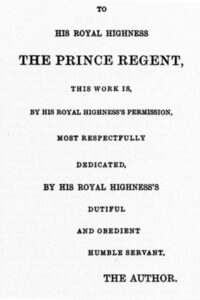
In a letter dated December 2, 1815, Jane writes to her dear sister, sorry that their mother had not been feeling well. She writes that perhaps the weather does not agree with her mother, but she surely enjoyed that December’s atypical weather: “I enjoy it all over me, from top to toe, from right to left, longitudinally, perpendicularly, diagonally; and I cannot but selfishly hope we are to have it last till Christmas,—nice, unwholesome, unseasonable, relaxing, close, muggy weather.” (1884 Vol. II, 260)
As you get ready for Christmas with your family and friends during this cozy time of the year, you might think back to Austen’s Christmases and pick up one of her books to celebrate her legacy, or consider a game of bullet pudding!
References and Further Reading
Austen, Jane. Persuasion, Oxford: Oxford World’s Classics, 2008
Devito, Carlo. A Jane Austen Christmas: Celebrating the Season of Romance, Ribbons & Mistletoe, Nashville: Cider Mill Press, 2015
Knatchbull-Hugessen, Edward Hugessen Lord Brabourne (ed.). Letters of Jane Austen, Vols. I and II, London: R. Bentley, 1884
Struthers, Jane. The Book of Christmas: Everything We Once Knew and Loved about Christmastime, London: Ebury Press, 2012
Tomalin, Claire. Jane Austen, A Life, New York: Vintage Books, 1999
© Fernanda Korovsky Moura and Leiden Arts in Society Blog, 2022. Unauthorised use and/or duplication of this material without express and written permission from this site’s author and/or owner is strictly prohibited. Excerpts and links may be used, provided that full and clear credit is given to Fernanda Korovsky Moura and Leiden Arts in Society Blog with appropriate and specific direction to the original content.


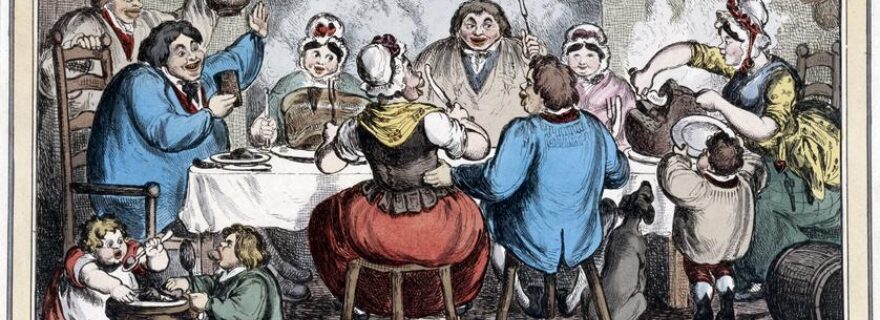
0 Comments